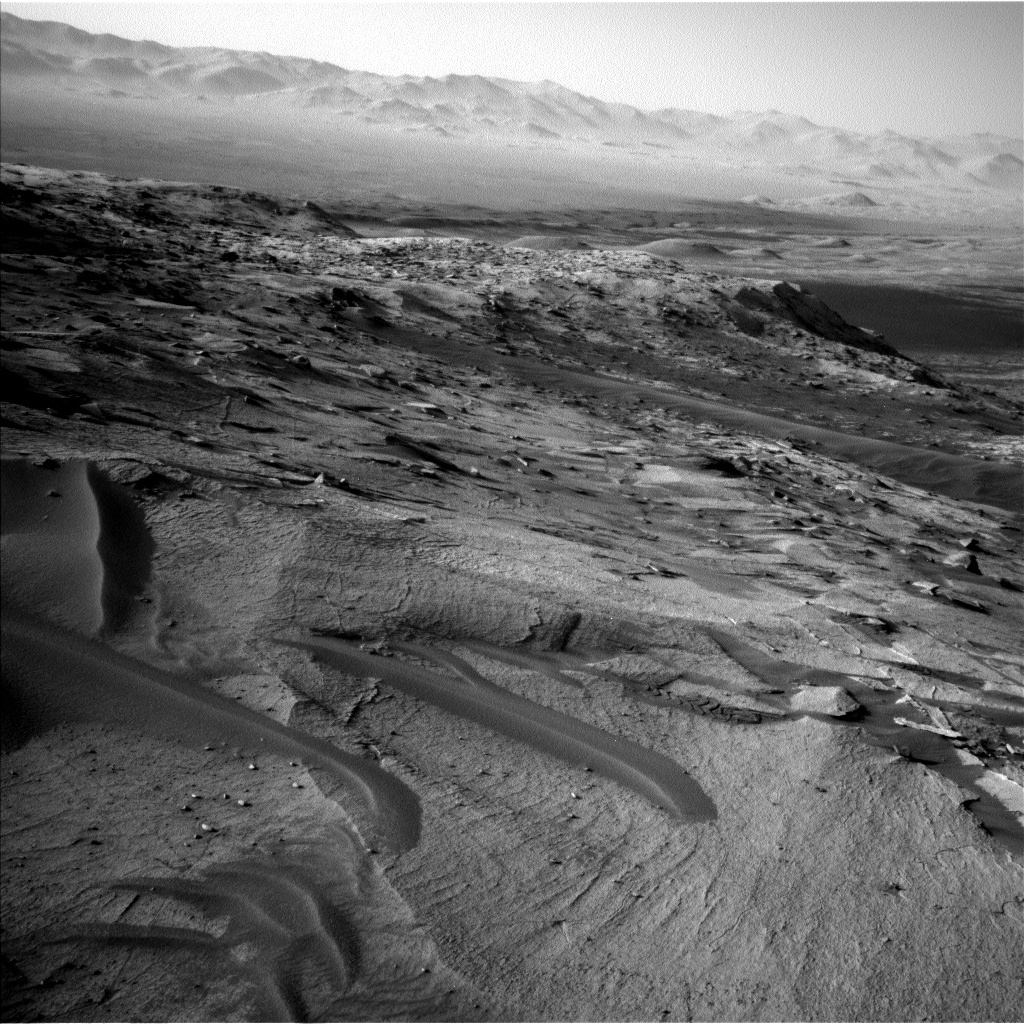3 min read

Solar conjunction is once again upon us - the time when the Sun comes between Mars and Earth in their orbital dances and precludes reliable communication between us and our robotic friends. This is the fifth conjunction Curiosity has experienced, and such a regular, cosmic event like conjunction provides the perfect time to reflect - where were we the last time Mars, Earth and the Sun aligned like this? Looking back over what we were up to around each conjunction is very much like looking through a scrapbook of memories.
We headed into our first conjunction, starting on Sol 236 (April 2013), fresh off the excitement of finding evidence of a habitable environment in our first drill sample “John Klein,” and still feeling the relief of having survived a major fault with the A side computer. Curiosity runs on the B side computer to this day.
At our second conjunction, on Sol 1004 (May 2015), we had just passed the Sol 1000 milestone and had completed walkabout exploration (on our beat up wheels) of "Pahrump Hills,” the lowest exposed section of Mount Sharp. There we collected three samples of the mudstone-dominated Murray formation. We parked for conjunction at a contact between the Murray formation and another major formation, the Stimson, an aeolian sandstone deposit. Curiosity has continued to encounter variations of both formations throughout her exploration of Gale.
Conjunction #3 started on Sol 1756 (July 2017), and we found ourselves sitting on the Murray formation just north of "Vera Rubin Ridge," looking up at its enticing layering and color variations. Leading up to that point, we had sampled our way across the Stimson-capped "Naukluft Plateau," maneuvered through the Stimson-capped "Murray Buttes," and were systematically sampling the Murray formation when the drill fell out of commission. The loss of the ability to drill and deliver sample to CheMin and SAM was a blow, but the team, to borrow from our sister rover, persevered to continue building the story of the rocks of Gale with the rest of the payload.
By the next conjunction on Sol 2506 (August 2019), we had made it up and down Vera Rubin Ridge multiple times and into the clay-bearing "Glen Torridon” region. Our multiple traverses across the ridge were not just for exploration. Since the previous conjunction, the engineers invented a new way to use the drill to once again allow us to collect samples. We revisited terrain to gather samples where it was not previously possible, and gratefully sampled our way into Glen Torridon, We acquired sample #22, the clay-bearing “Glen Etive” sample, right before conjunction. In the midst of all the exploration and sampling, Curiosity also survived a near-global dust storm!
This time around, on Sol 3251, we sit just a few meters away from our 33rd drill hole, ”Maria Gordon,” in the shadow of the western side of the "Greenheugh Pediment.” We successfully summited the northern edge of the pediment since last conjunction, allowing us to cross over, sample, and analyze yet another (but higher!) Murray-Stimson contact. We hope to climb up onto the pediment again as we make our way from the clay-rich rocks of the Glen Torridon region toward the anticipated sulfate-rich layers of Mount Sharp above. But for the next few weeks, we will simply pause, look across the view above, and appreciate how much we have done and how far we have come.
Written by Michelle Minitti, Planetary Geologist at Framework







